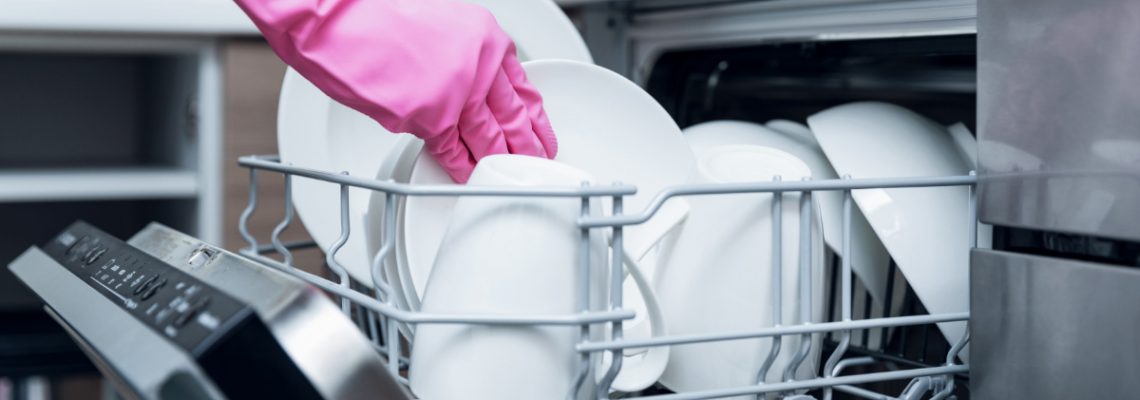If when unloading the dishwasher you notice that your plates still have food remnants on them, or your glassware is speckled with cloudy water spots – you may suspect your dishwasher is not working and on the way out. However, user error could be to blame and fixing and finding out common dishwasher loading mistakes should lead to your dishes coming out sparkling!
5 dishwasher loading mistakes
1. Loading utensils in the same direction
Alternate the direction of your spoons and forks so they won’t group together, otherwise water may not hit every surface! If you have a slotted holder for utensils rather than a bucket, use that as it is likely to give all surfaces of your knives, forks and spoons a more thorough wash.
2. Load dishes the right way
Pay close attention to the sprayer arm and ensure that when loading your plates, bowls, cups and crockery that this arm remains unobstructed. Load plates facing towards the middle of the machine so that the sprayer arm can thoroughly spray the surface of each one.
3. Don’t overload the dishwasher
If the dishwasher is overloaded, it isn’t going to be able to do a great job. Instead of saving yourself time and water, you’ll end up washing everything again as once the sprayer arm is no longer able to reach all surfaces, they won’t be able to be cleaned properly.
4. Not scraping food from your plates
Make sure you scrape food off the dishes thoroughly before dishwashing, otherwise food particles will get caught in the filter and your dishwasher won’t be able to run a clean cycle. This could lead to your dishes coming out a little smelly and glasses looking a little cloudy.
5. Not cleaning your dishwasher
Just because your dishwasher runs every day it doesn’t mean it’s clean. If your dishwasher smells, it needs to be cleaned asap. Removing all of those leftover food particles is a dirty job and every couple of weeks it’s important to run your dishwasher on an empty load with just a cup of white vinegar to thoroughly clean it and kill all bacteria.



